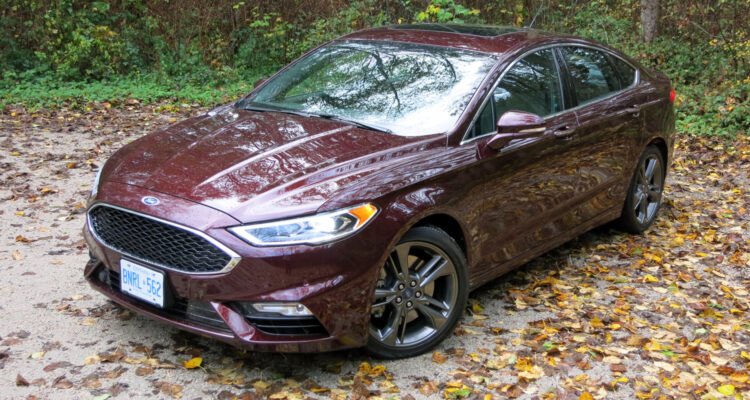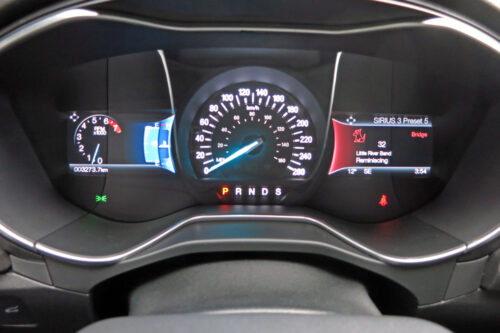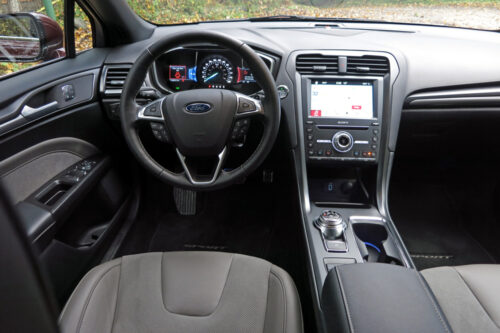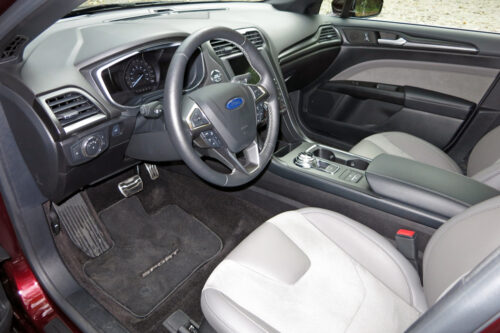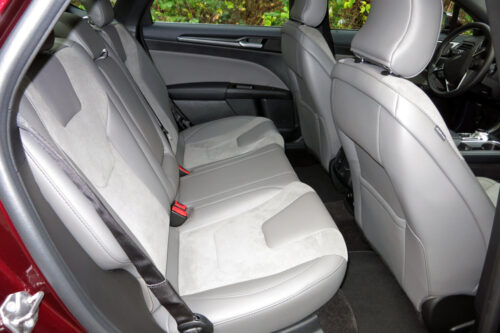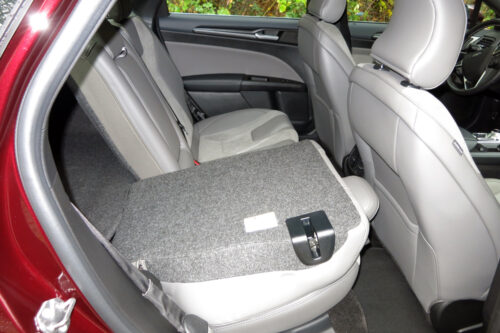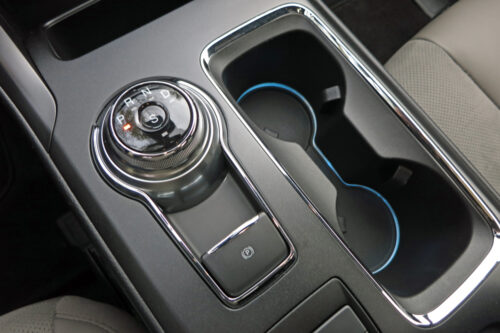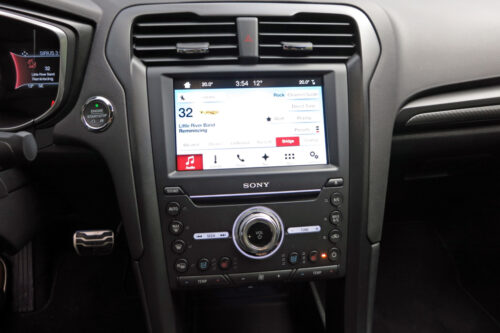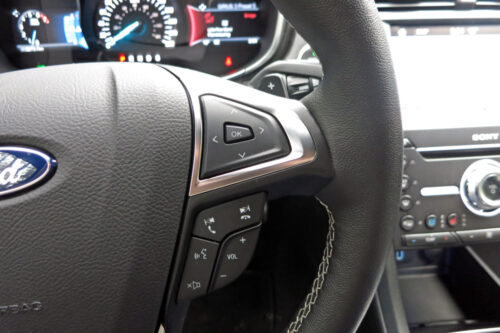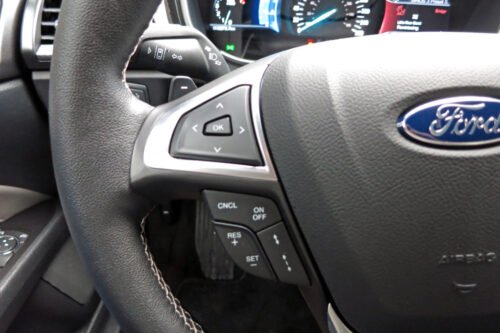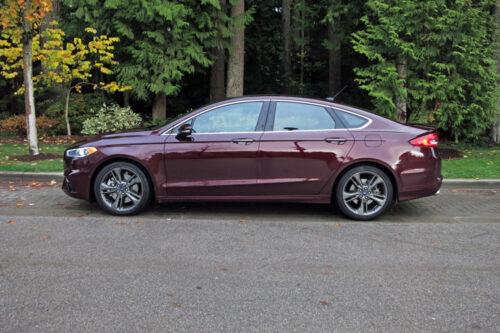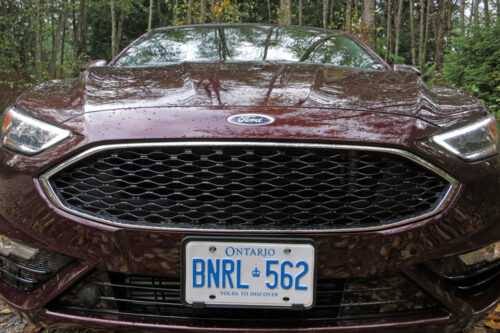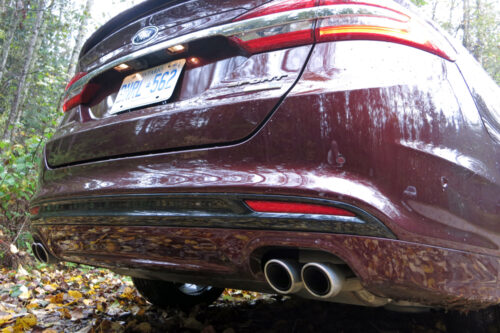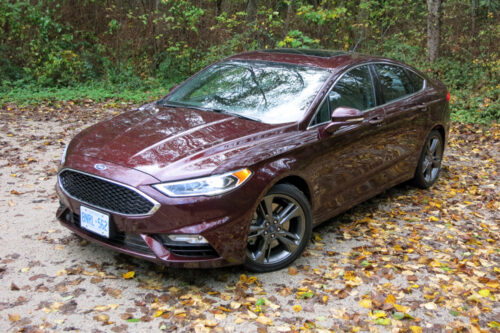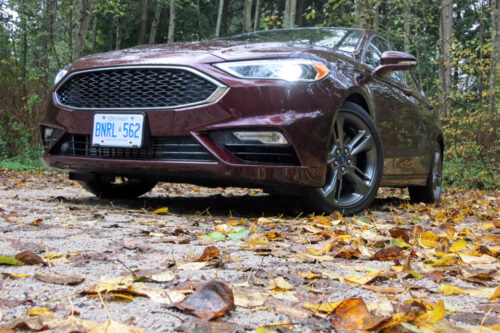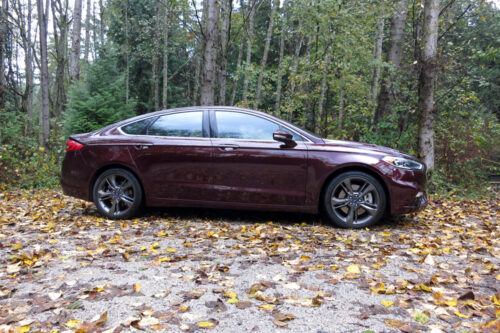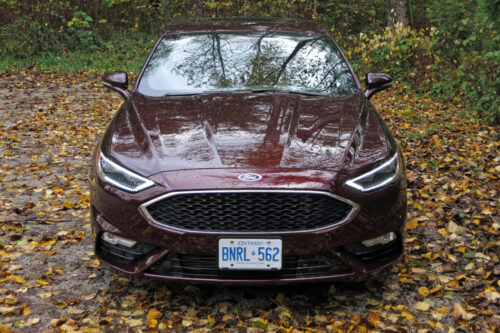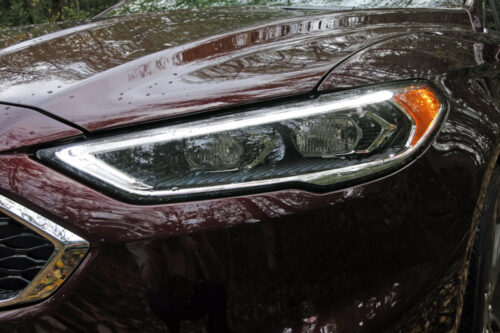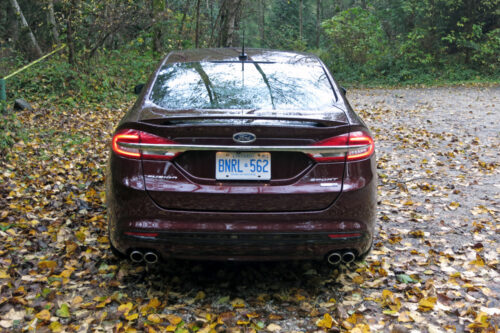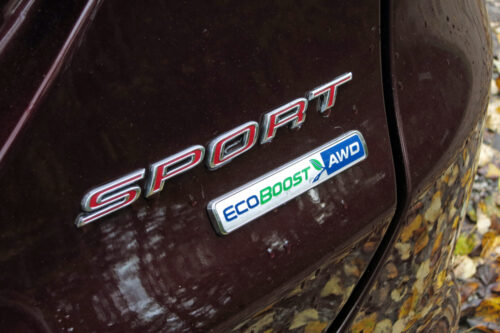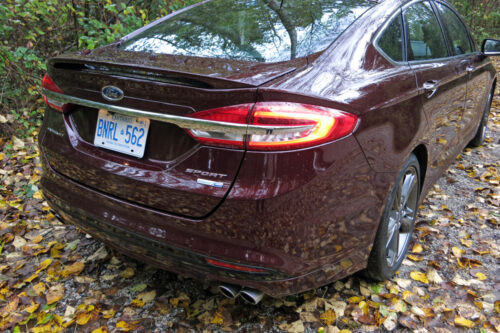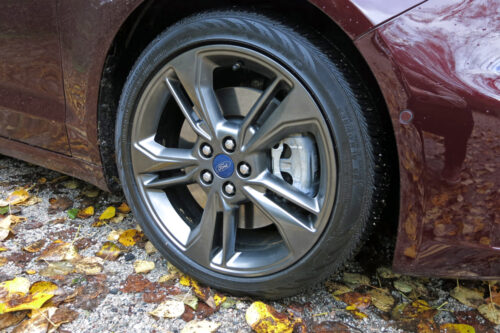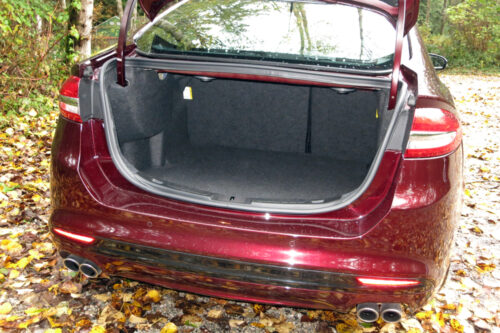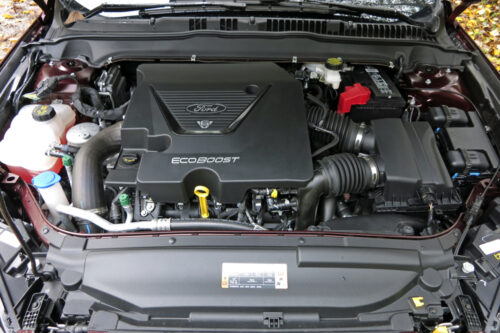A Jaguar XF wannabe…surely you jest my good man.
My son was at the wheel of this week’s tester as I rode the passenger seat. It was dark with little traffic as we transitioned from highway to city streets. I closed my eyes and asked myself what car would I guess this to be if I were dropped into it blindfolded? A Jaguar XF came to mind.
Ridiculous you say?
Not so fast my friend; before I have genteel Jaguar owners alleging heresy, let me explain.
I’ve spent considerable time behind the wheel of the XF, on track and off. The car impressed me and became a favourite sedan of mine. Many of the attributes therein – and in particular the vehicle’s smooth, authoritative acceleration and highly composed ride dynamics – were mimicked by the Fusion Sport.
The two key components of the Fusion Sport which immersed me in an XF-like experience were the vehicle’s 2.7L twin-turbocharged EcoBoost V6 power plant and its superb suspension setup, the latter of which utilizes continuously controlled-damping, featuring pothole detection/mitigation technology.
So, a little more on both those fronts.
Let’s start under the hood where 325 horsepower have taken residency. That’s a lot of energy, which places the Fusion Sport firmly into the 300+ horsepower club, which is a distinction not heralded upon many mid-size sedans under the $50K benchmark regardless of country of origin.
Yet more important than horsepower to “in the know” drivers is the torque generated by an engine. Are you ready for this? The number for the Fusion Sport is 380 ft-lb of twist at 3,500 RPM. Rest assured, there’s something very special about an engine when its torque number exceeds its horsepower rating.
Now that the two key similarities have been revealed, indulge me with a little exercise of the mind to contrast the British cat with the American wannabe:
Close your eyes as I did. Now imagine sitting in a supportive, suede-covered seat in a vehicle under full acceleration in which the pull sinks you into the seat and latches your head to the head restraint.
You hear a tremendously refined, yet melodious baritone growl. As the tachometer hits 6,000 RPM, the transmission smoothly slots the next gear with no discernible loss of momentum, and without the crude kick in the back of a dual-clutch gearbox.
As the car encounters rough, broken pavement, you feel the suspension absorb the impacts without undesirable channeling into the cabin. The vehicle doesn’t become unsettled or lose its stable tracking; despite the potholes, the cabin remains solid, tight, and rattle-free.
Now, based on what I’ve described, your imagination should have placed you into the Jaguar XF. If, however, your financial acumen rejected the $62,000+ UK cat in favour of a Fusion Sport, Bravo! You nailed it. Yes, I think the Fusion Sport is that good.
Obviously, the Fusion Sport isn’t a Jaguar XF. It can’t match the feline’s exclusivity, elegance, or outright performance, but guess what…it’s surprisingly close.
The Fusion Sport exerts a firm grip at all four compass points thanks to its all-wheel-drive configuration, which does a flawless job of eliminating wheel-spin when the avalanche of torque is unleashed.
Augmenting the car’s competency in the corners is a Sport mode, which recalibrates the underpinnings to flatten-out cornering while generating a little more steering resistance. Sport mode also remaps the throttle for quicker hits of juice while also encouraging the relatively old-school 6-speed automatic transmission to make sportier use of its cogs.
Interestingly, the Fusion’s ride doesn’t become harsh with the Sport mode activated. Yes, it’s a little firmer but in a good way, which isn’t always the case with adjustable suspension setups.
The cabin of the Fusion Sport is exceptionally well appointed. Goodies include heated/cooled seats, Apple Car Play and Android Auto, not to mention premium audio and a slick rotary dial gear-selector set into the centre console, again ala Jaguar.
Eliminating the traditional shift lever opened the centre console to storage, which is tremendously convenient for the modern clutter we now carry. While on the topic of storage, I was dumbfounded by the Fusion’s cavernous trunk, which I’m sure encompasses more square footage than a half-million dollar Vancouver condo.
So what are the knocks against the Fusion Sport?
Well, there two as I see it. First is the price, which crests the $44,000 threshold. That opens the field to plenty of global competition, though I doubt you’d find similar performance numbers and a similarly long list of standard features in anything from Germany for the same money.
The second knock pertains again to expense, but in the form of price per litre. The Fusion Sport is rated in the city at 13.5L/100km, which is a little steep for a mid-size vehicle. Drive it with an emphasis on “sport,” and that figure could climb even higher.
Still, the Fusion Sport is unlike any Fusion I’ve driven in the past. While I don’t endorse eyes-closed driving, it’s not hard to imagine oneself in a Jag when the EcoBoost power plant dispenses a wallop of torque accompanied by a sterling growl that would do any cat proud.
2017 Ford Fusion Sport
Price as tested (before taxes): $44,038
Freight: $1,750
Configuration: front engine, all-wheel drive
Engine/transmission: 2.7L 6-cylinder / 6-speed automatic
Power/torque: 325 hp / 380 lb-ft
Fuel-economy ratings (L/100km): city 13.5, highway 9.0
Observed fuel-economy (L/100km): varied from 13.5
Warranty (basic): 3 years / 60,000 km
Competitors: Acura TLX, Audi A4, BMW 340i, Dodge Charger, Chevrolet Malibu, Honda Accord, Nissan Maxima, Toyota Camry.
Related links:



